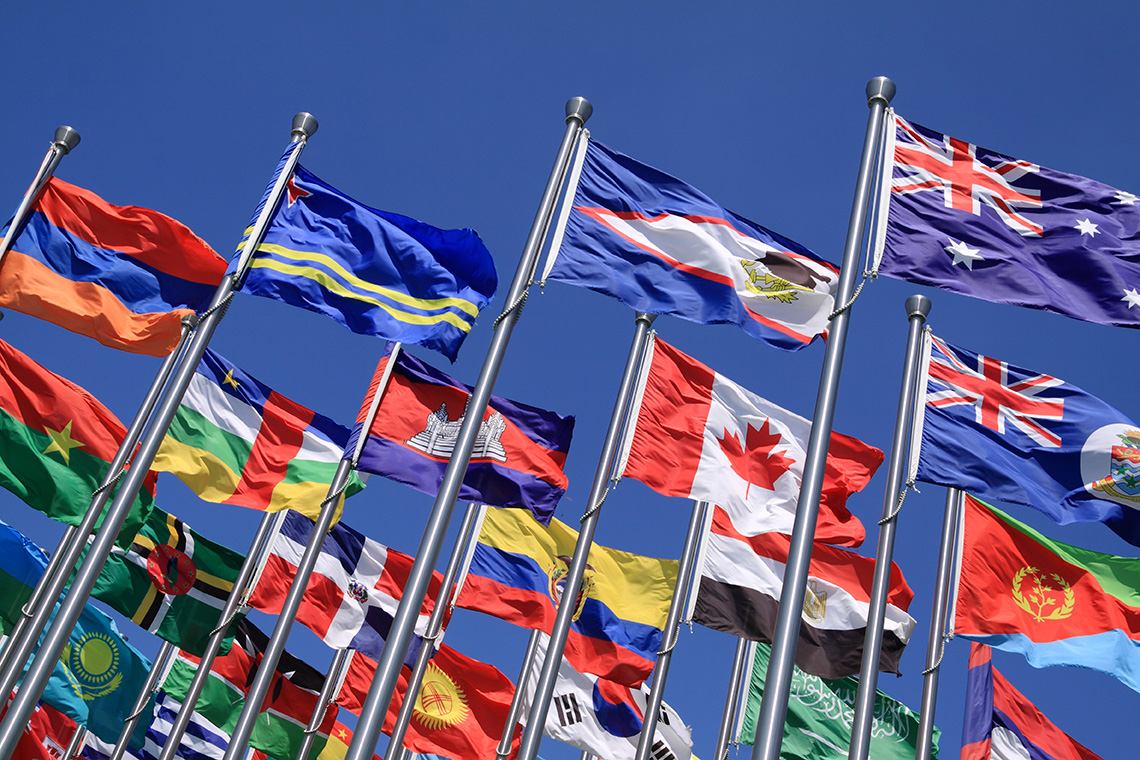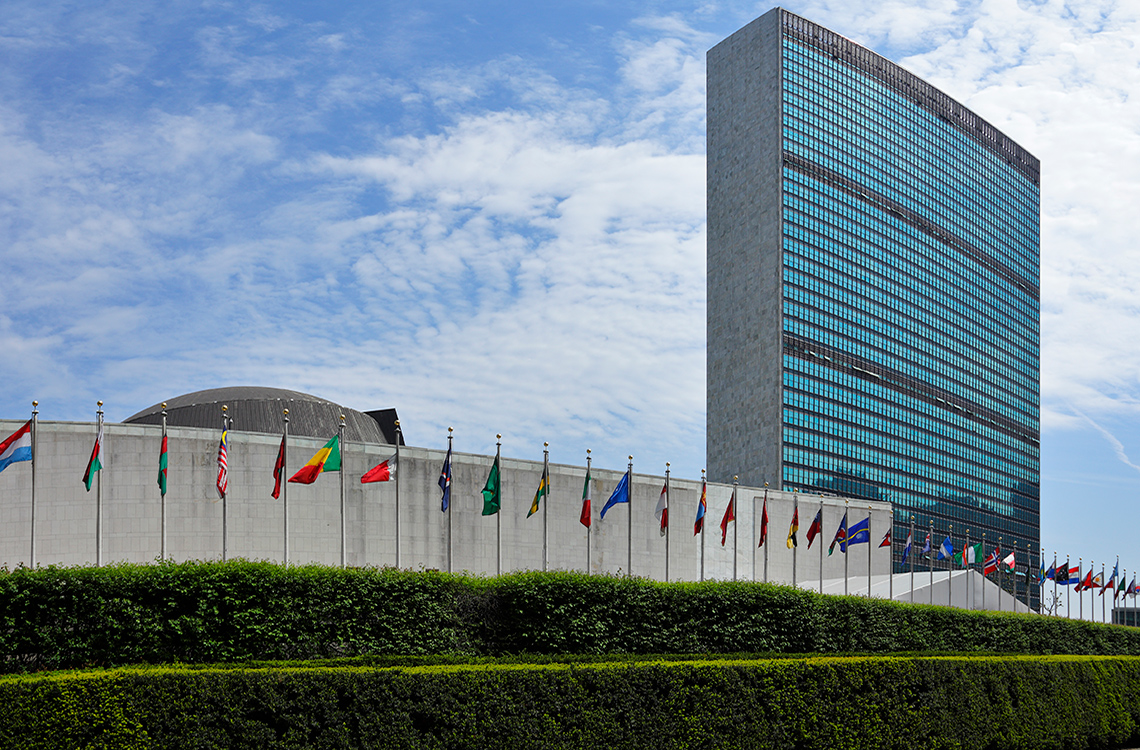Minds On
Canada’s relationships with different organizations

Below is a list of acronyms.
Press 'What is an acronym' to reveal what the word acronym means.
An acronym is a word formed by combining the initial letters of a long name or phrase.
An example of an acronym would be SCUBA. The word SCUBA is formed from the following phrase: Self Contained Underwater Breathing Apparatus.
Match the correct acronym for each of the organizations that Canada has relationships with. You can also record your findings using a method of your choice. Consider what the organizations do and why Canada would be participating in them.
For each acronym, select the corresponding organization that it represents.
Action
Canada’s participation internationally

Canada is connected to the world in several ways. These ways include:
- economy (trade)
- society
- politics
- the environment
- justice
- human rights
As you explored in the Minds On section, Canada is involved in many international organizations with a variety of different countries.
For example, the UN or the United Nations is an international organization whose goal is to maintain worldwide peace and security. Canada has been a member of the United Nations since 1945, when it was originally established.
Consider the following and record your ideas using a method of your choice.
- Why does Canada participate in specific international accords (agreements) and organizations?
Canada has been a major contributor to various world organizations and international accords for many years.
Press the links to explore each acronym.
Canada was a founding member of the North Atlantic Treaty Organization or NATO. Among other things, this organization safeguards the security of its member countries by promoting justice, peace, and freedom. As of 2024, there are 32 member countries across Europe and North America.
The focus of NATO is to ensure members cooperate and communicate on security-related concerns to solve problems, develop trust, and promote peace. NATO is committed to promoting peaceful resolutions and, through cooperation with other countries, has developed crisis management protocols.

Another organization that Canada is a founding member of is the United Nations. Founded in 1945, this organization promotes worldwide peace and security and environmental goals, and supports human rights and education for all. The UN focuses on working together towards the common goal of global security and prosperity by promoting a sustainable and inclusive global community.
Canada participates in the UN and helps to promote human rights, advance peace and security, uphold the rule of law, address climate change, and ensure sustainable development.
The UN helps to promote agreement among nations and this is demonstrated by the adoption of the 2030 Agenda and the Sustainable Development Goals by all member nations. The 2030 Agenda aims to promote equality, address climate change, and build peaceful societies. Canada works closely with global partners to support the implementation of the Global Goals for Sustainable Development.

Explore the following questions and respond using a method of your choice. Use your own ideas, information from the text, or other resources.
- What is the difference between NATO and the UN?
- Why does Canada belong to both NATO and the UN? What does the term ‘belong’ to these organizations mean for Canada?
Press ‘Possible responses’ to reveal answers that you might have thought of.
- North Atlantic Treaty Organization or NATO focuses on safeguarding the security of its member countries by promoting justice, peace, and freedom. The United Nations promotes peace and security for the world, as well as pursuing environmental goals and supporting human rights and education for all.
- Canada may belong to both organizations because they focus on different efforts and levels of security. While one focuses on justice for the member nations, the other promotes global peace, human rights, and environmental efforts. In this case, ‘belonging’ might refer to Canada’s involvement with each organization and their responsibility to uphold each organization’s regulations.
Canada and the Trans-Pacific Partnership
One of the largest trade agreements among countries is the Trans-Pacific Trade Agreement. Canada is one of 11 countries involved in the agreement that was made to remove tariffs or taxes from goods that are produced in those countries.
 Description
Description
This image is of a map showing the 11 nations that are involved in the Trans-Pacific Partnerships. These 11 countries include Canada, Mexico, Peru, Chile, New Zealand, Australia, Malaysia, Singapore, Brunei, Vietnam, and Japan. The United States is also indicated on the map; however, they withdrew from the partnership in 2017.
Press ‘Trans-Pacific Partnerships’ to reveal more information about this agreement.
The Trans-Pacific Partnership eliminates 99 percent of tariffs charged between the 11 nations participating in the partnership. By eliminating tariffs, each member country in the partnership has an equal opportunity to have their economy grow. With more business happening in the 11 participating countries, more people become employed, and this stimulates the economy.
Press each term to understand what it means.
The Trans-Pacific Partnership does not only deal with tariffs. This agreement is a way for countries to establish rules and guidelines for each other when they decide to trade services and goods.
Trans-Pacific Partnership effects

Review the following chart about the Trans-Pacific Partnership Effects within Canada.
| Sector | Outcome |
|---|---|
|
Automotive |
|
|
Farming |
|
|
Copyright laws |
|
|
Medicine |
|
Source: Tim Alamenciak - Published on Nov 19, et al. “A Simple Guide to the Trans-Pacific Partnership Deal.” TVO.org, https://www.tvo.org/article/a-simple-guide-to-the-trans-pacific-partnership-deal.
Answer the following questions by completing the Trans-Pacific Partnership (TPP) Recording Sheet in your notebook or using the following fillable activity document. You can also record your thoughts using a method of your choice. Use the information provided in the Trans-Pacific Partnerships Effects chart and/or additional sources.
- What nations are involved in the Trans-Pacific Partnership (TPP)?
- Briefly summarize how the automotive sector, farmers, copyright law, and medicine have been affected by the TPP. Be sure to include an example of how each has changed.
- Explain why you think it is important for Canada to have trade agreements with other countries.
Press the ‘Activity’ button to access the Trans-Pacific Partnership (TPP) Recording Sheet.
Press ‘Possible Student Responses’ to reveal a filled-in Trans-Pacific Partnership (TPP) Recording Sheet.
|
Briefly summarize how the automotive sector, farmers, copyright law, and medicine have been affected by the TPP. Be sure to include an example of how each has changed in each of your paragraphs. |
Automotive Sector:
|
|
Farming:
|
|
|
Copyright Laws:
|
|
|
Medicine:
|
|
|
What nations are involved in the Trans-Pacific Partnership (TPP)?
|
Canada, Mexico, Peru, Chile, New Zealand, Australia, Malaysia, Singapore, Brunei, Vietnam, and Japan |
| Explain why you think it is important for Canada to have trade agreements with other countries. | Trade agreements are important because they provide the opportunity to ensure fair and equitable trade. |
World Health Organization
Consider the following:
- What is the WHO?
- What is the role of the WHO?
The World Health Organization (WHO) works worldwide to promote health and safety. It is the largest of the specialized agencies in the United Nations. The WHO has offices in over 150 nations, with its main office based in Geneva, Switzerland. The WHO brings together health experts from around the world.

The primary goal of the WHO is to promote and provide worldwide healthcare coverage, protect the population from health concerns, and promote health and well-being for all. Canada works closely with the WHO to support their work worldwide.
Let’s explore the WHO’s efforts
Press each of the following tabs to explore the WHO’s efforts.
- focuses on basic health care to improve access to services
- promotes financial support
- promotes access to health products and medicines
- helps to train health care workforce
- seeks to improve data collection, information, and monitoring of various medical conditions
- helps to create standards for which medicines can be approved
- supports and promotes participation in national health policies
- identify, reduce, and manage risks related to health concerns
- support the development of strategies and tools to promote health safety
- ensures the delivery of essential health services
- identify and respond to health-related needs
- supports health in all policies and settings
- promotes collective approaches for health
“What We Do.” World Health Organization, World Health Organization, https://www.who.int/about/what-we-do.
Respond to the following true or false questions. If the question is false, consider how to make it true.
Select the correct answer.
Press 'Correction' to reveal how to make the false statement correct.
The role of the WHO focuses only on policy development.
This is a false statement. The WHO focuses on policy development, as well as actively supporting nations with health-related initiatives.
Consolidation
International partnerships

Select one of the organizations, partnerships, or accords that was explored (UN, NATO, The Trans-Pacific Partnership, or the WHO), or another organization of your choice that Canada participates in and create a summary of the organization and Canada’s involvement.
Press ‘Hint’ to reveal organizations Canada is involved with.
- NATO (North Atlantic Treaty Organization)
- APEC (Asia-Pacific Economic Cooperation)
- NAFTA (North American Free Trade Agreement)
- WHO (World Health Organization)
- G7 (group of seven)
- G20 (group of 20)
- UN (United Nations)
- WTO (World Trade Organization)
- UNESCO (United Nations Educational, Scientific and Cultural Organization)
Use your own ideas, information explored, and additional research to respond to the following:
- provide a summary of Canada’s participation in an international accord, organization, or program
- explain why Canada participates in that specific international accord or organization
- identify the importance of the international organization, accord, or program
Record your ideas by completing the International Participation document in your notebook or using the following fillable activity document.
Press the ‘Activity’ button to access International Participation.
Think about what you have just learned

Respond to the following questions using a method of your choice.
- What is the influence of some significant accords and/or organizations in which the Government of Canada participates?
- Why does the Government of Canada participate in various international organizations, accords, and programs? How might this help develop relationships with other countries?
Reflection
As you read through these descriptions, which sentence best describes how you are feeling about your understanding of this learning activity? Press the button that is beside this sentence.
I feel...
Now, record your ideas using a voice recorder, speech-to-text, or writing tool.